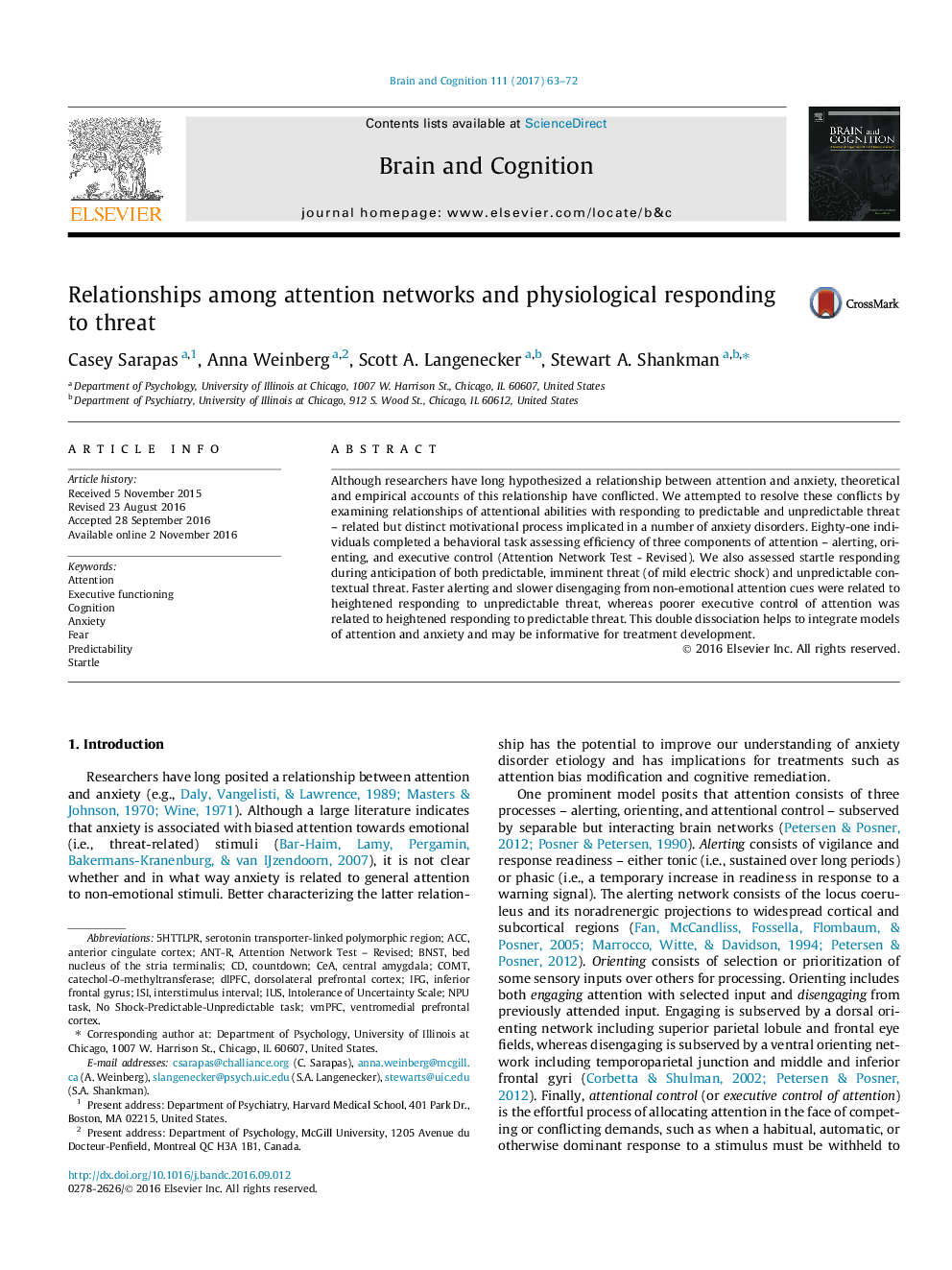| Article ID | Journal | Published Year | Pages | File Type |
|---|---|---|---|---|
| 5041186 | Brain and Cognition | 2017 | 10 Pages |
â¢We examined relationships between non-emotional attention and sensitivity to threat.â¢Faster temporal alerting and slower spatial disengaging were related to reactivity to unpredictable threat.â¢Poorer executive control of attention was related to reactivity.â¢These relationships mediated modest indirect effects of attention on self-reported anxiety.
Although researchers have long hypothesized a relationship between attention and anxiety, theoretical and empirical accounts of this relationship have conflicted. We attempted to resolve these conflicts by examining relationships of attentional abilities with responding to predictable and unpredictable threat - related but distinct motivational process implicated in a number of anxiety disorders. Eighty-one individuals completed a behavioral task assessing efficiency of three components of attention - alerting, orienting, and executive control (Attention Network Test - Revised). We also assessed startle responding during anticipation of both predictable, imminent threat (of mild electric shock) and unpredictable contextual threat. Faster alerting and slower disengaging from non-emotional attention cues were related to heightened responding to unpredictable threat, whereas poorer executive control of attention was related to heightened responding to predictable threat. This double dissociation helps to integrate models of attention and anxiety and may be informative for treatment development.
